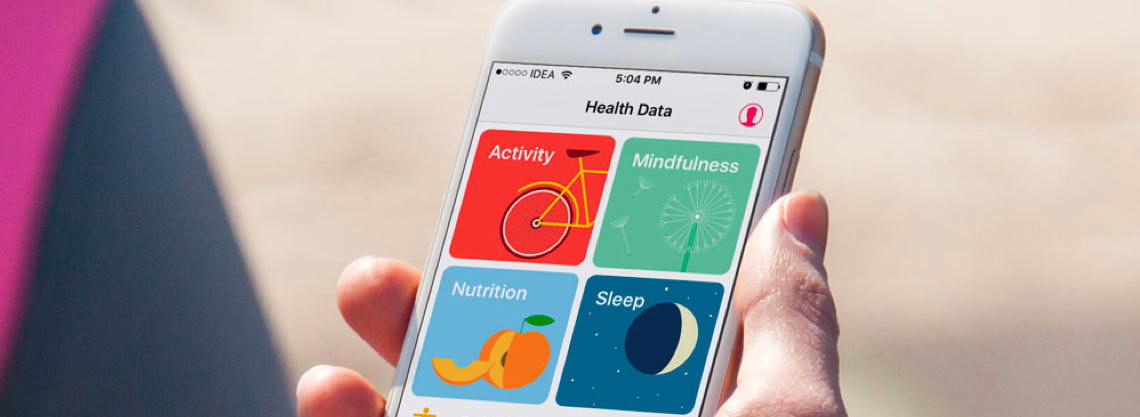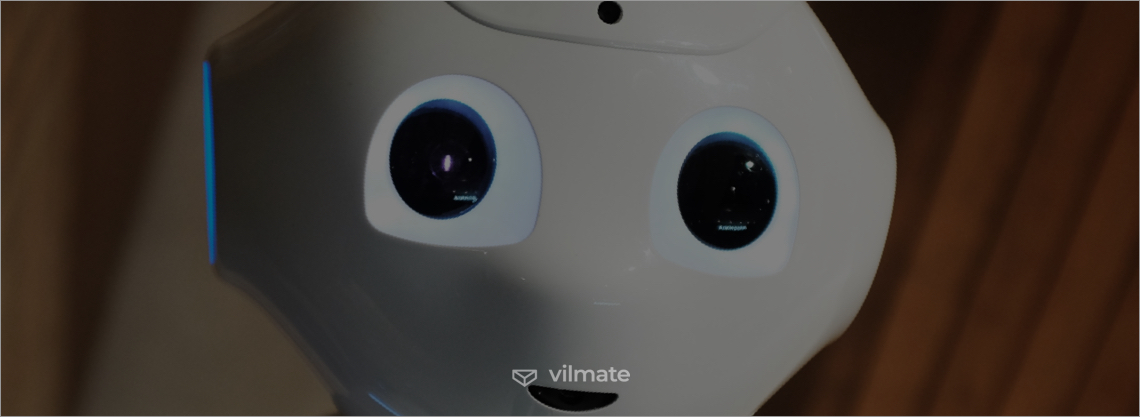Overall wellness is what most of us are striving for. To be physically, mentally, and emotionally healthy is a goal. Luckily, the most up-to-date health, fitness, and nutrition guidelines offer extensive behavior modification strategies helping people abandon negative habits and develop positive ones instead. At this point, however, a problem arises, since a health/fitness environment we live in is rather “toxic.” It seems so demanding that we all can feel stressed experiencing this pressure. People certainly need support and therefore the mobile development industry is eager to lend us a helping hand.
Why people need fitness applications?
Owing to the generally increasing demand for mobile health (mHealth) applications and growing interest in fitness tracking and monitoring through smartphones, the global mHealth market size is also expected to grow. Valued at USD 4.19 billion in 2016, it will supposedly reach USD 111.8 billion by 2025. However, many people who have once made up their mind to engage in fitness behaviors quit an app later on. 35.1% of those who do so abandon the app together with abandoning their health goals. In about a quarter of cases, mobile apps lack desired features (e.g., tracking, notifications.) These two most commonly reported reasons raise a question of motivation in achieving goals and make app developers think thoroughly about what features people expect to get increasing user lifetime value.
Types of fitness apps
Fitness apps are divided into three main groups in terms of the kinds of health-related behavior: workout, activity tracking and diet apps.

1. Workout apps
Another overpriced gym, an inconvenient location or work hours, lack of time, whatever the reason, all this makes us explore different options with a view to start exercising regularly and have fun along the way. An app focusing on physical training is an effective solution to a problem.
Primarily, these apps substitute your personal trainer. Most of them offer huge free libraries of exercises. Besides, users can access the workout plans customized to their fitness level and goals for a fixed price. Some apps suggest them repeating the same exercises time and again while the others are gradually making the workouts harder either automatically or depending on your personal rating. Not surprisingly, the workouts with the app can be easier than with a real trainer if you underestimate your abilities or do not want to push yourself to try more difficult workouts. Convenience and price, however, are worth much. Motivated or not, you get to choose.
2. Fitness activity tracking apps
If you want to have your daily activities tracked, these apps will help you with that. Pairing your smartwatch with your phone will allow you to receive more accurate data about the steps taken, heartbeat, calories burnt, sleep hours, sleep quality, and other physiological parameters. In fact, mobile apps of this kind are often developed by brands that sell activity trackers. Thus, users will have all the information about their fitness activity transferred to their smartphone wirelessly via Bluetooth.
3. Nutrition and diet apps
To find and maintain your healthy weight, control water intake, remain in caloric balance (the difference between how many calories you consume and burn) and develop healthy eating habits — nutrition and diet apps will introduce you to another handy way to track your activity and, thus, attain these goals. As a rule, visualization is the key feature most users expect such apps to have. Taking advantage of daily comprehensive stats, they can monitor their progress in achieving personal goals. Keeping in mind that these applications are made to help people learn good eating habits without becoming obsessive, thus, you will boost the chances for conscious creating the desired body and health.
To put it simply, wellness focuses on four basic elements, namely regular exercise, getting good sleep, eating right, and practicing mindfulness. Since wellness is much more than a state of physical health, mental health apps should not be neglected. Such applications target mental health improvement through meditation, hypnosis, or cognitive behavioral therapy, as well as reduction of users’ depression or anxiety providing a valuable support network and tracking their mood and mental symptoms.
Main features of fitness applications
- Creating an account
It is hardly surprising that users expect fitness apps to deliver personalized experiences. Thus, a personal account is a must. It will let people track their progress, change subscription and store billing information. Besides, integrating social login can enhance an application, since it will be much easier for users to create accounts.
- Push notifications
Messages pushed to UI can not only remind users about workouts but also motivate them. One way or another, they should not be annoying. Instead, as gentle reminders, they need to adjust to people’s wants.
- Socialization
Social support is a key factor influencing adherence to making lasting changes to fitness behavior and health. This focusing on the effort rather than progress protects users from discouragement in case they fail to achieve their goal. For instance, completing daily challenges created by an expert together with other users and posting the updates entails learning from each other through observation and creating a common experience for emotional support.
- Geolocation integration
Benefiting from location-aware mobile fitness applications, users get access to real-time data, navigation and map view. Nutrition and diet apps may recommend spots to eat and shops or farmer’s markets depending on users’ preferences; while all fitness activity tracking apps repose on this feature. Besides, apps that encourage socialization can inform users of events happening around them.
- Wearables data integration
This feature is closely related to geo integration. Such devices as fitness trackers, smartwatches, and wristbands are constantly developed which improves the accuracy of the collected data. Thus, users can view data related to physical activities and health right on their smartphones. For instance, Android wearable devices can either run the full Android OS or use APIs (e.g. Wear SDK and Glass GDK) to access their features.
Top fitness applications
There are thousands of mobile apps designed to support people's physical health, mental health, and overall well-being improvement. Not all of them, however, are as good as they are expected to be. Allowing for this, we have compiled a list of the best fitness apps everyone would be glad to have on his or her smartphone.
1. Nike+ Training Club
With the Nike Training Club app, you will get an idea of how effective at-home workouts might be. Fully guided 15-, 30-, and 45-minute sessions designed by NTC Master Trainers will take your training to the next level. AirPlay and AppleTV support will allow displaying videos on larger screens. Besides, the app offers encouragement through a reward system and everybody can celebrate his or her achievements by sharing them on social media platforms and getting positive feedback.
2. Runtastic GPS Running, Jogging and Fitness Tracker
Surprisingly, this app is not just a pure fitness activity tracker with a GPS feature. Indeed, Runtastic can track such metrics as time, speed, distance, elevation, and calories burned, but also it has other tools like setting goals, providing motivation by bringing its users a Real Voice Coach, and reminding them when it is time to change their pair of sneakers for a new one. Should you pay for a Premium Membership; personalized training plans, tutorial videos, advanced stats, and weekly reports will become freely available.
3. MyFitnessPal
As a nutrition and diet app, MyFitnessPal offers the largest database of over five million food items. It saves your favorite meals and allows adding new recipes and foods. At the same time, as a fitness tracker, the app covers hundreds of cardio and strength workouts. MyFitnessPal has a private-access API. It allows developers to connect devices to the nutritional database in real-time. This partner integration enables information synchronization across different apps and devices. Having developed a partnership with about 80% of all fitness apps, MyFitnessPal has made this integration the necessity for those who are just about to enter the market.
How to create a fitness app?
Once you have decided on the type of fitness app you would like to develop, you need to make it clear what activities the software development process will consist of. These are the steps that should be completed:
-
Technical Documentation. A tech writer creates a document that will enable a developer to assess the time and effort required.
-
UX / UI design. The ideas that might turn into new features become the design strategies here to be used when coding and launching the mobile application. It also deserves attention, since the User Experience and User Interface define your app’s success.
-
Development. The fitness app development does not differ much from the development of any other app. However, software engineers should understand the distinct features of the niche (i.e., wearables data integration.) App design, functionality, user interaction, and connectivity development are with this a challenge.
-
Testing. What is more, the overall trial for testing the usability of the app plays a very important role. The quality compliance team should be involved to define a test strategy for a product tackling crashes, bugs, and broken link issues.
The competitiveness of the global fitness app market is the obstacle companies may face. Consequently, the uniqueness and usefulness of a product are a must in developing mobile applications of that kind. Since wellness, fitness and health are all about an individual, a single user; personalization is a key. The fitness app with an idea, non-intrusive notifications, all necessary for a certain type of application features and, if relevant, wearables integration inevitably will win users’ hearts.

© 2018, Vilmate LLC






